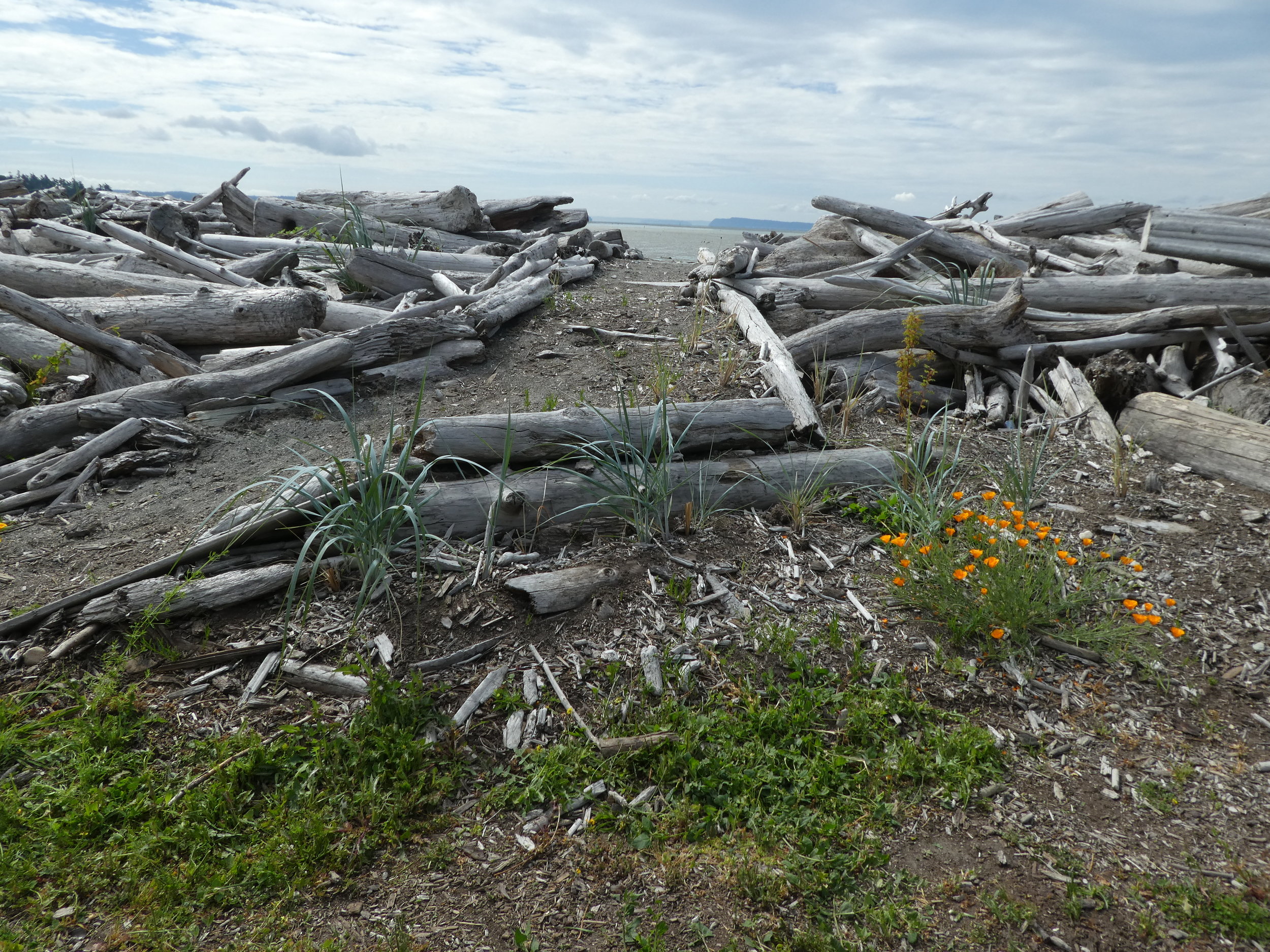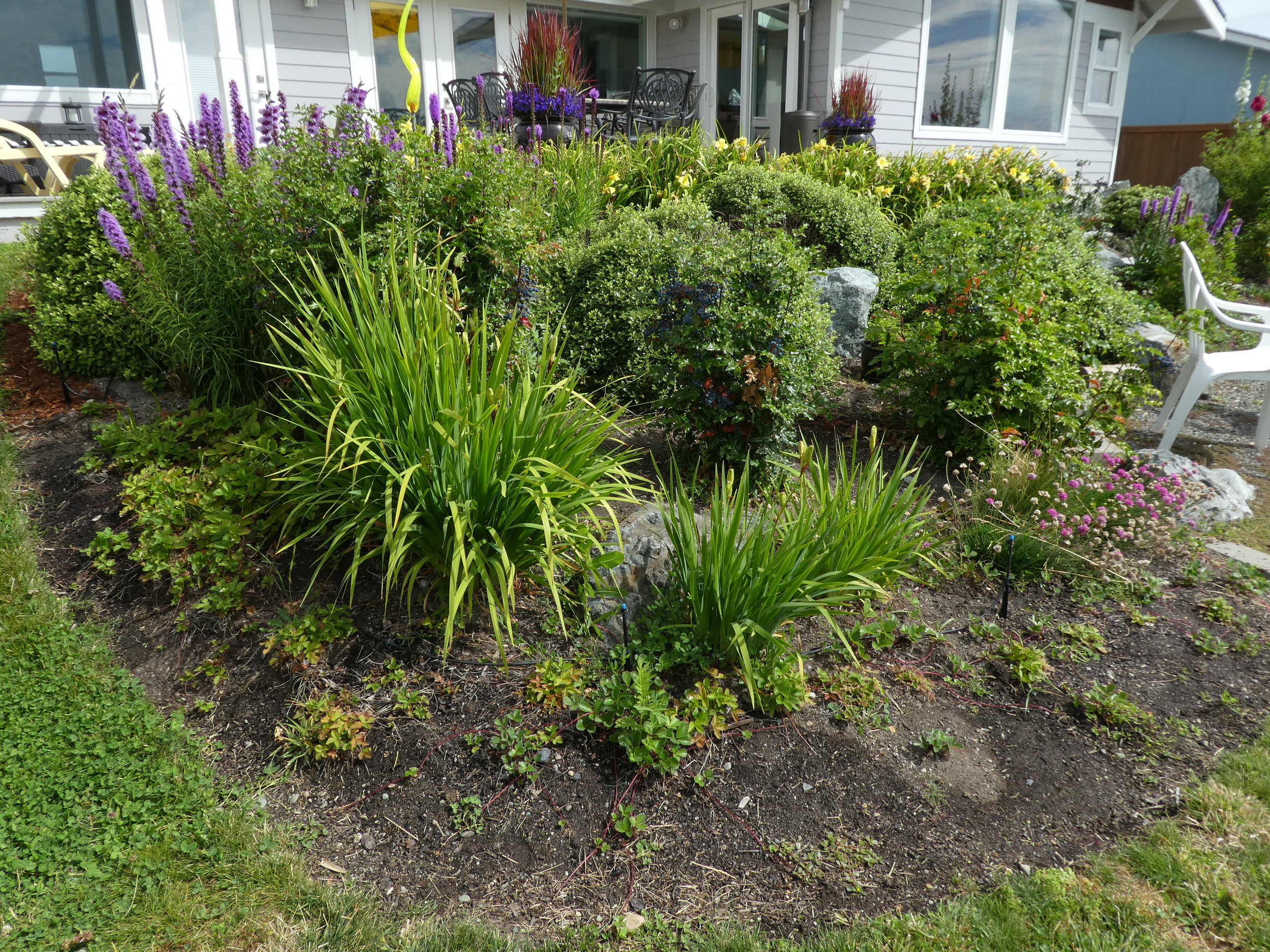Community Comes Together to Enhance Their Shoreline
/The Livingston Bay Community on Camano Island is fortunate to enjoy a beautiful sandy beach, abundant wildlife in Livingston Bay, and views that extend to Mount Rainier (when it’s clear, that is). Their beach is home to a lot of driftwood (good), but also a variety of invasive weeds (not so good). Community members contacted us in 2013 to discuss a native planting demonstration project at one of their community beach access trails. At that time, we helped them remove some invasive plants, but weren’t able to provide replacement native plants.
But the community didn’t give up, nor did we. In early 2016 we met again with community members to discuss their goals for the community, including removing more invasive plants and planting native plants. Five days after the meeting, the storms of March 2016 hit. Sea water inundated the shoreline and killed much of the existing vegetation. Once wave-driven logs were moved back away from people’s patios, a clean planting slate appeared.
Funding became available and 10 properties signed up to receive and plant a variety of native shoreline plants in the community’s nearshore area, which will create habitat for more of the wildlife they enjoy and help hold their soil in place.
The District hosted two of three work parties to remove weeds and plant some of the thousands of bareroot shoreline grasses, flowers and shrubs. Staff and residents removed enough weeds to fill the District truck bed and several yard waste bins with the likes of deadly nightshade, poison hemlock, morning glory, blackberry, ivy and thistle. In place of the weeds, the community planted grasses like American dunegrass, seaside arrowgrass, and Lyngby’s sedge; flowers such as Pacific silverweed, Douglas aster, common yarrow, and coastal strawberry; and shrubs such as low Oregon grape, snowberry, Nootka rose, and red-flowering currant.
Months later, the beginnings of rich new habitat are evident. Weeds must still be pulled, as with any new landscape, and a population boom of cottontails took a toll on some of the plant species, but the new shoreline plants are growing and spreading in the beautiful nearshore environment, thanks to the commitment of the Livingston Bay community members.
Planting a neighborhood shoreline is a new type of project for us and our work with the Livingston Bay Community is a pilot. We’d like to gauge the interest in this type of project with shoreline communities so that we can apply for grant funding and add it to our annual and long-range work plans. If you live in a shoreline community and would like to enhance its health and beauty with native plants, please let us know. Contact Kathryn at 425-377-7024 or kathryn@snohomishcd.org.

















